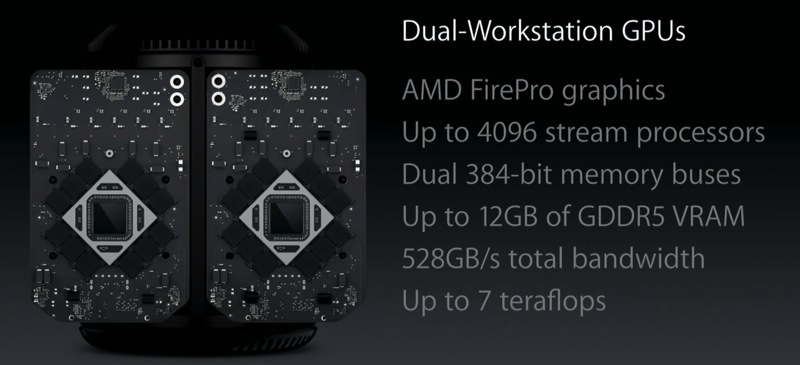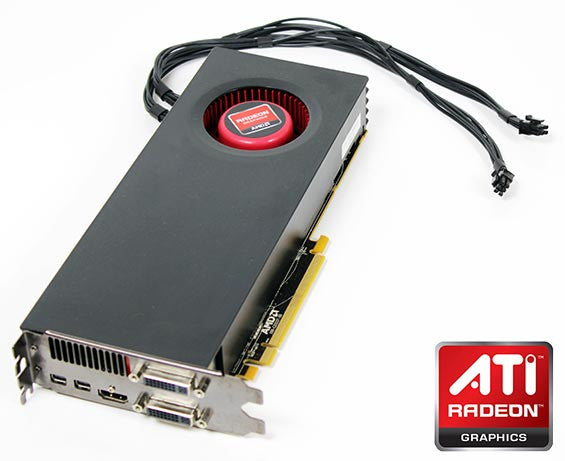


#APPLE MAC PRO VIDEO CARDS 1080P#
We ran a looped 1080p video with the screen at 50% brightness until the battery died, and it lasted just under 13 and a half hours. Apple promised that this model would come with the longest battery life “ever in a Mac”, and it wasn’t lying. Not only was the day-to-day performance of the MacBook Pro 13-inch (M1, 2020) impressive, but the battery life blew us away. For most of the work we did on the new MacBook Pro 13-inch, the fans were not needed, so the laptop was virtually silent. Throughout our time with the new MacBook Pro, where we used both new M1 versions of apps, as well as older versions that had been made for Intel-based Macs, we were incredibly impressed by the performance, and our synthetic benchmark tests showed that the M1 chip can easily rival 11th generation Intel CPUs – and we were seeing performance that at times compared with the 16-inch MacBook Pro, a much more expensive device.ĭuring our tests, the MacBook Pro 13-inch did get a little warm towards the back, and we’d sometimes hear the fans kick in, but this was after only sustained high-intensity use. The fact that we were able to edit 8K footage using a laptop running integrated graphics (rather than using a more powerful, and expensive, dedicated graphics card) was incredibly impressive. We could quickly and easily scroll through the footage, with the thumbnail preview showing us what we were editing, while chopping, changing and adding effects to the 8K project was all handled smoothly. We played around with an 8K video project that uses multiple ultra high definition sources, and again, the MacBook Pro 13-inch (M1, 2020) performed admirably. However, when it came to putting it to some serious work in Final Cut Pro X, we were really impressed. In day-to-day use, macOS Big Sur feels fast and responsive, and we were able to quickly open up and run several intensive applications at once, swapping between them with ease. The MacBook Pro 13-inch (M1, 2020) is a brilliant performer. The good news is that those fears seem to be almost completely unfounded. When Apple first announced it was moving away from Intel and developing its own chip, many people were concerned about how this might affect performance, especially with the MacBook Pro line, which are used by creatives for intensive workloads, such as high resolution video editing and rendering. (Image credit: Future) MacBook Pro 13-inch (M1, 2020) review: Power and performance It’s about the same price as the Dell XPS 13 for similar specs, and it remains much more affordable than the 16-inch MacBook Pro, which still uses Intel hardware and comes with an AMD Radeon Pro 5300M graphics card for £2,399. So, this is a pricey laptop, but it’s not excessively expensive. This is the model we’d recommend to people doing some serious video editing, due to its larger hard drive and extra RAM. You can also get this model with 512GB storage for £1,499, and you can also get a version with the same M1 chip, but with a 2TB SSD and 16GB of RAM for £2,299. The base model of the MacBook Pro 13-inch (M1, 2020) comes with the M1 chip, which comprises of an 8-core CPU and 8-core GPU, along with a 256GB SSD and 8GB of unified memory. It should also mean that the earlier MacBook Pro 13-inch model should see some price cuts, which is welcome, as it’s still a very good laptop in its own right. This means for the same money, you’re getting new and improved hardware, which is pretty commendable. One of the things we’ve really liked seeing Apple do recently is launch new versions of its products for the same price as the previous model launched for, and it’s done it again with the MacBook Pro 13-inch (M1, 2020), which starts at £1,299: the same price that the earlier MacBook Pro 13-inch launched for. MacBook Pro 13-inch (M1, 2020) review: Price


 0 kommentar(er)
0 kommentar(er)
